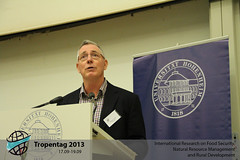Are toilets an indicator for the peri-urban area?
One of the biggest challenges of the conference theme “rural-urban continuum” was the definition of the rural and urban landscape. In the view of Jefferson Fox from the East West Center, Honolulu (USA), this distinction between urban and rural is not useful when large areas and populations are caught between the two.







Comments
Post new comment